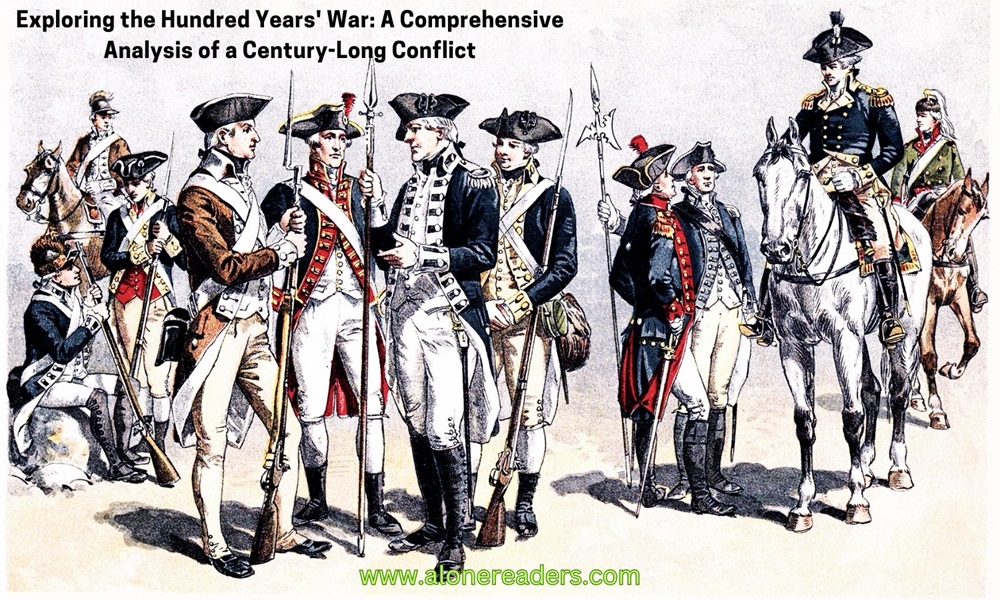
The Hundred Years' War, a prolonged series of conflicts that spanned from 1337 to 1453, remains one of the most significant periods in European history. This war, primarily fought between England and France, reshaped the landscape of power, politics, and warfare in medieval Europe. The conflict was not a continuous battle but consisted of several intermittent phases, marked by notable battles, treaties, and shifts in power.
The root of the conflict lay in the complex feudal relationship between the kings of England and France. English monarchs held significant territories in France, initially as vassals to the French king. However, over time, as the English crown's power and ambition grew, these holdings became a source of contention. The immediate cause of the war was the dispute over the succession to the French throne following the death of the French king Charles IV in 1328. The English king Edward III, a nephew of Charles IV, claimed the French throne citing his direct lineage. This claim was contested by Philip VI of France, leading to the outbreak of hostilities.
The war witnessed the evolution of military tactics and the decline of chivalric warfare. The English longbow, first used effectively at the Battle of Crécy in 1346, revolutionized infantry tactics. The longbow, in the hands of skilled English archers, could penetrate armor at long range, undermining the dominance of heavily armored knights on the battlefield. This innovation was again demonstrated at the Battle of Agincourt in 1415, where a numerically inferior English army achieved a stunning victory over French forces.
Another notable aspect of the Hundred Years' War was the role of notable figures. Perhaps the most famous is Joan of Arc, a French peasant girl who, claiming divine guidance, played a pivotal role in lifting the Siege of Orléans in 1429. Her involvement marked a turning point in the war, bolstering French morale and leading to the coronation of Charles VII as the King of France. Joan's eventual capture, trial, and execution by the English and their Burgundian allies added to her legend and martyrdom, becoming a symbol of French nationalism.
The war also had profound social and economic impacts. It disrupted trade and agriculture, leading to famine and hardship for the population of both countries. The repeated conflicts devastated the countryside, especially in France, where most of the battles were fought. The war exacerbated existing feudal tensions, leading to peasant uprisings like the Jacquerie in France in 1358. In England, the war's financial strain contributed to the Peasants' Revolt in 1381.
Politically, the war led to significant changes in both England and France. In England, the cost of the war and the use of new taxes led to conflicts between the monarchy and Parliament, laying the groundwork for constitutional changes. In France, the conflict helped consolidate royal power, as the Valois monarchs expanded their control over the country, reducing the influence of the nobility.
The Hundred Years' War also had a lasting impact on national identity in both England and France. In England, the war helped consolidate a sense of English nationhood, distinct from the French. In France, the struggle against an external enemy fostered a stronger sense of French identity and nationalism.
The Treaty of Picquigny in 1475 formally ended the hostilities, with England renouncing claims to the French throne in exchange for financial compensation. The war had irrevocably changed the landscape of medieval Europe, setting the stage for the emergence of modern nation-states. The conflict influenced art, literature, and culture, with its tales of heroism, tragedy, and the human cost of war echoing through centuries.
In conclusion, the Hundred Years' War was more than a series of battles; it was a transformative event that reshaped medieval Europe. It altered the course of military history, impacted the social and economic structures of the period, and played a crucial role in the development of national identities in England and France. The war's legacy continues to be a subject of fascination and study, highlighting the complexities of medieval politics, the evolution of warfare, and the enduring human capacity for resilience and adaptability in the face of prolonged conflict.